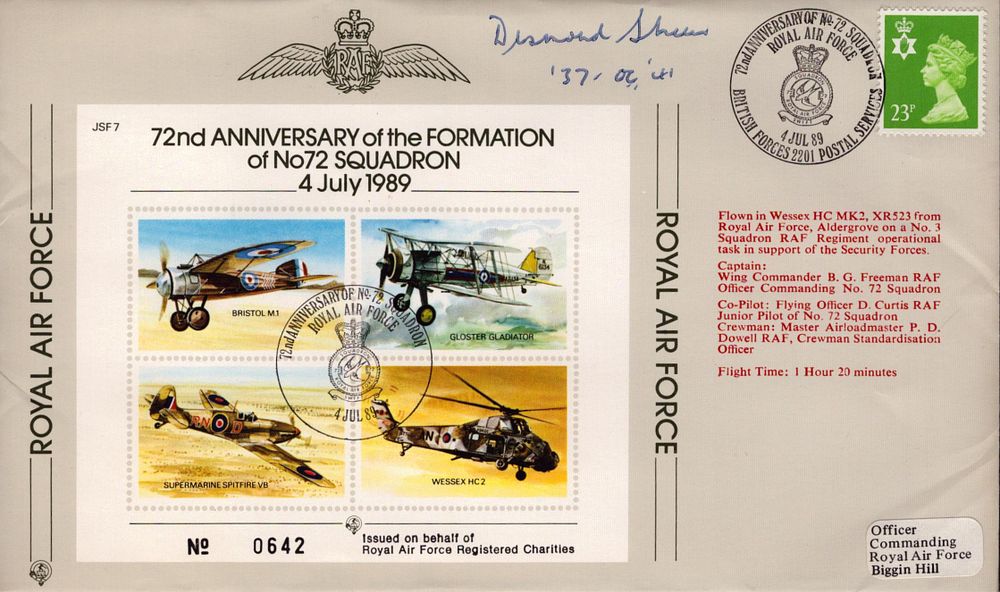439
WW2 BOB pilot Grp Capt F. B Sheen DFC signed 72nd Anniversary 72 sqn RAF cover 4 July 1989 FDC PM
You are about to place a bid of GBP
Opening price : GBP
Bids do not include VAT, buyer’s premium or delivery.
By confirming your bid, you agree that you have read and accepted the-saleroom.com and the auctioneer's terms and conditions. Confirming your bid is a legally binding obligation to purchase and pay for the lot should your bid be successful.
Please note: you can manage your bids before the auction starts in My Saleroom. Your max bid is private and confidential.
Choose one of the quick bid options below:
Bids do not include VAT, buyer’s premium or delivery.
By confirming your bid, you agree that you have read and accepted the-saleroom.com and the auctioneer's terms and conditions. Confirming your bid is a legally binding obligation to purchase and pay for the lot should your bid be successful.
Please note: you can manage your bids before the auction starts in My Saleroom. Your max bid is private and confidential.
AUTOGRAPH AUCTION HISTORIC SPACE MILITARY TV FILM SPORT CONCORDE
Sale Date(s)
Venue Address
General delivery information available from the auctioneer
- The UK delivery cost start from £4.99 for items up to £50 and from £6.95 for items over £50, plus any additional insurance to cover the full lot value. Overseas orders will be charged at cost. If you have special delivery instructions, do not hesitate to call us on 0800 1701314
All autographs and first day covers will come securely packaged with an envelope stiffener in a board-backed envelope. Larger photographs and prints are sent in a tough tube, and books and oversized/framed items will be packaged with bubble wrap and sent in a box.
Important Information
INTERNET ONLY AUCTION
PLEASE NOTE: Winning lots will be sent via post.
Viewing of lots is by appointment by calling 0800 1701314
Buyer`s Premium 20.95% + VAT
Lots purchased online with the-saleroom.com will attract an additional charge for this service in the sum of 4.95% of the hammer price plus VAT at the rate imposed
Shipping:
All items are sent by either Recorded or Royal Mail Special Delivery. The UK delivery cost will be £4.95 for items up to £50 and £6.95 for items over £50, plus any additional insurance to cover the full lot value. Overseas orders will be charged at cost. If you have special delivery instructions, do not hesitate to call us on 0800 1701314
All autographs and first day covers will come securely packaged with an envelope stiffener in a board-backed envelope. Larger photographs and prints are sent in a tough tube, and books and oversized/framed items will be packaged with bubble wrap and sent in a box.
Terms & Conditions
Buyers Terms & Conditions
1. Default
For all purposes of a sale the Auctioneers (Chaucer Covers) shall be deemed to be the agent of both the Seller and the Purchaser and they shall not be considered responsible for any default on the part of either the Seller or Purchaser.
2. Warranty of Title
The vendor warrants to Chaucer Covers and the buyer that he is the true owner of the property or is properly authorised to sell the property by the true owner and is able to transfer good and marketable title to the goods free from any third party claims.
The vendor warrants to Chaucer Covers and it's servants and agents and the buyer against any loss or damage suffered by either in consequence of any breach of the above on the part of the vendor
3. Bidding
The highest bidder for each lot shall be the Purchaser of it. No one is entitled to retract a bid. The Auctioneers reserve the right of refusing any bid without giving any reason and of altering, adding to, dividing, consolidating or withdrawing any lot or lots for sale.
The Auctioneers reserve the right to fix a reserve price for any lot at a figure no higher than the lower estimate.
The Auctioneers reserve the right to bid on behalf of the Seller on lots which are subject to a reserve price. The Seller shall not be entitled to bid where the Auctioneers have reserved such a right.
The Auctioneers will accept commission bids from any person who is unable to attend the sale. Bids will also be accepted by telephone, email and fax at the sender's risk.
5. Online Bidding via www.the-saleroom.com
Chaucer Covers offer an online bidding service via the-saleroom.com for bidders who cannot attend the sale.
In completing the bidder registration on www.the-saleroom.com and providing your credit card details and unless alternative arrangements are agreed with Chaucer Covers you authorise Chaucer Covers if they so wish, to charge the credit card given in part or full payment, including all fees, for items successfully purchased in the auction via the-saleroom.com, and confirm that you are authorised to provide these credit card details to Chaucer Covers. through www.the-saleroom.com and agree that Chaucer Covers are entitled to ship the goods to the card holder name and card holder address provided in fulfilment of the sale.
Please note that any lots purchased via the-saleroom.com live auction service will be subject to an additional 4.95% commission charge + VAT at the rate imposed on the hammer price
6. Risk
All lots shall be the sole risk of the Purchaser from the fall of the hammer. The Purchaser shall take all lots in the condition in which he finds them. It is the responsibility of all intending Purchasers to satisfy themselves by inspection or otherwise as to the authenticity in the authorship, date, age, period, condition or quality of any lot.
7. Liability
Neither the Seller of any lot nor the Auctioneers make or give nor has any person in the employment of the Auctioneers any authority to make or give any representation or warranty in relation to any lot and any implied conditions or warranties are excluded. All statements contained in the Catalogue as to the authenticity, attribution, genuineness, origin, authorship, date, age, period, condition or quality of any lot are statements of opinion only and are not to be taken as or implying statements or representations of fact. Lots are sold subject to all faults and errors in description or otherwise.
8. Indemnity
The vendor shall duly indemnify Chaucer Covers against any claim in connection with any goods sold by Chaucer Covers on the vendors behalf.
9. Payment
The Purchaser shall pay the Hammer Price together with a premium of 20.95% of this Price. An 20.95% premium will be payable by Purchasers outside the European Union (EU). Zero-rated goods such as books will be subject to a premium of 20.95% whether within or outside the EU unless entered by a VAT registered Seller.
Payments for lots must be made in cash, bankers draft or cheque guaranteed by the bank upon which it is drawn. Lots will not be released against cheques from Purchasers unknown to the Auctioneers until cleared by such Purchaser's bank. Payment is accepted by Visa and Mastercard. Payment is also accepted by most debit cards with no surcharge.
Overseas clients are requested to settle accounts by Bank Transfer, Visa or Mastercard.
10. Delivery
Lots will only be released once payment in full has been received from the Purchaser. Lots will be dispatched by Special Delivery, insured or air mail post or courier. Shipping costs will be paid by the Purchaser.
11. Jurisdiction
These Conditions shall be governed by English law and the parties submit to the exclusive jurisdiction of the English courts.









